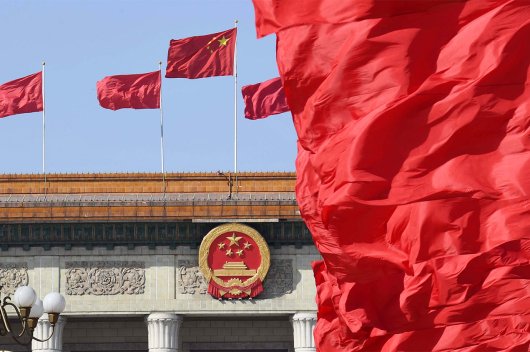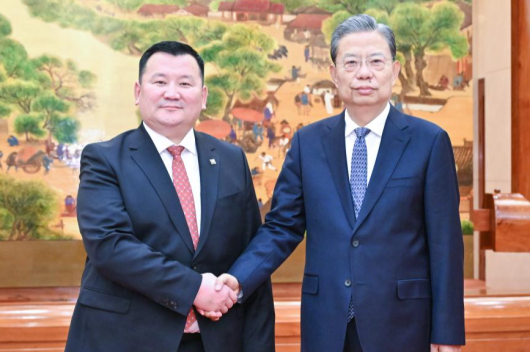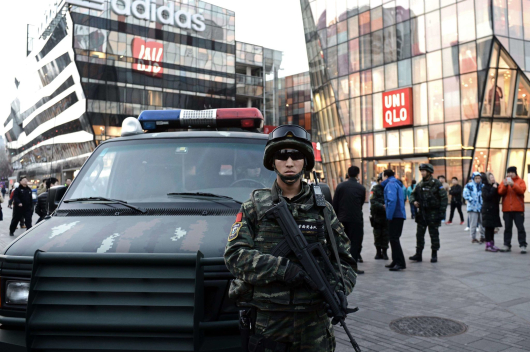The downward pressure on the global economy and increasingly complex external environment this year brought more attention of the international community including Mongolia to the Chinese economy. Some Western media have been hyping up “overcapacity”, “debt crisis” and “foreign capital outflow” which lead to China’s “economic collapse” and the “end of China’s economic miracle”. However, facts have proved once again what collapses has always been the allegation of a declining China. The Chinese economy has always shown strong resilience, great potential, growing vitality, and long-term sustainability, remaining a major engine driving world development.
The Chinese economy re-balanced itself rapidly. In the first half of this year, China’s GDP grew by 5.5%, a figure that put China among the top of world’s major economies. The World Bank, the OECD and the IMF predict that China’s economy will grow by 5.6%, 5.4% and 5% respectively in 2023. Fitch Ratings, the Bruegel think tank of the European Union, and the World Bank are optimistic about China’s manufacturing strength, core position in trade, and attraction for investment, predicting that China’s average annual growth in the next five years will exceed 5% and the per capita GDP in 2030 will reach USD 20,000. Such performance makes China a rare highlight in the sluggish global recovery.
Consumption maintains the momentum for growth. From January to August this year, China’s consumption increased by 7% year-on-year, and investment by 4%. Contribution of consumption to economic growth reached 77.2%, more than 44 percentage points up from last year. Service sector is a particular highlight. From January to July, retail sales of transportation, accommodation, catering and other services had a 20.3% year-on-yearincrease. Over 502 million people walked into cinemas this summer. The Asian Games held in my hometown Zhejiang Province hit the headlines around the world and set off a new wave of sports and tourism consumption.
High-quality development is making rapidprogress. By implementing the new development philosophy and the innovation-driven development strategy, the Chinese economy has upgraded the traditional industries and strengthened the emerging ones. In the first half of the year, as China increased its export of new energy vehicles by 112.7% year on year to 795,000 and took 28.3% of the global market, China became the largest automobile exporter in the world. China’s installed capacity of renewable energy has exceeded that of coal. The installed capacity of wind and photovoltaic power has ranked first in the world for 13 and 8 consecutive years respectively. China is providing more mid- and high-end products to the world and climbing up the value chain topush forward the development of neighboring countries.
China remains one of the top destinations for foreign capital. China has been expandingopening up by carrying out 24 policies to attract foreign investment in China. Multinationals“voted with their feet” when executives from Volkswagen, Siemens, Airbus, Apple, Tesla and other companies visited China one after another. In the first half of this year, investment in China from France, the UK, Japan and Germany increased by 173.3%, 135.3%, 53% and 14.2% respectively. A total of 24,000 new foreign-funded companies were established in China, a year-on-year increase of 35.7%. As the world’s second largest destination for foreign investment,China provides a 9.1% yield for foreign-funded enterprises, which is much higher than the 3.1% in Europe and America and the average of emerging economies.
The Belt and Road Initiative has achieved remarkable development results in the past ten years, injecting strong impetus into international development at a time of sluggish global recovery. More than 3,000 cooperation projects have brought nearly USD one trillion investment. Transportation infrastructure projects and a number of clean, efficient, and high-quality green energy projects have delivered a brighter future for the countries involved. The China-Mongolia Desertification Prevention and Control Cooperation Center was set up to assist Mongolia’s green development. The World Bank estimates that all transportation projects under the Belt and Road framework areexpected to increase global income by 0.7% to 2.9% by 2030, lifting 7.6 million people around the world out of extreme poverty and 32 million people out of moderate poverty.
The growing China-Mongolia cooperation has a huge potential. In the first three quarters of this year, China-Mongolia trade increased by 30%, coming even closer to the goal of USD 20 billion. Mongolian coal exports to China are expected to exceed 55 million tons this year, a historic record high. Mongolia estimates that, for every 1% growth of the Chinese economy, Mongolia’s exports will increase by 4% within six months to one year, and the economy will grow by about 0.6%. China-Mongolia port connectivity has been restored, freight volume has rebounded rapidly, and passenger transport has recovered steadily.
Post-epidemic economic recovery is not a smooth process. China has never been a problem-dodger but a solution provider. China has taken a series of measures to restore and expand consumption, develop the private sector, and attract foreign investment and they are delivering positive results. With a sufficientpolicy toolbox, the Chinese government isconfident that systemic risks will not occur. The evaluation of China’s economic recovery should not be based on its performance over a short period of time. What matters most is the stable and long-term sustainability since the reform and opening up and the determination of the Chinese government to grow the economy.
Every country is facing challenges, including the lingering pain from COVID over the past three years, the prolonged Ukraine crisis, resurfacing conflicts in the Middle East and the slow economic recovery. No country is immune to crises in this globalized world. China and Mongolia are comprehensive strategic partners with geographical proximity and economic complementarity. As the relations between the two countries are growing closer, cooperation in all fields is becoming deeper. We welcome Mongolia to take the opportunities of China’s economic growth to deepen intertwined interests and share the dividends of development.
Ambassador Extraordinary and Plenipotentiary of the People’s Republic of China to Mongolia Shen Minjuan
 3,575.44
3,575.44












Related News